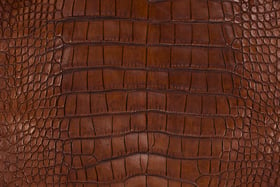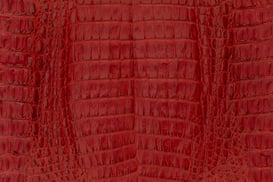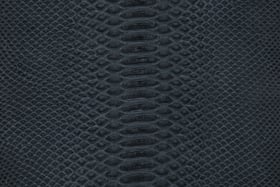The high fashion footwear industry can be tough. There are a lot of established designers and up-and-comers competing for attention in this market. To get noticed, your high-fashion boots and other footwear products need to be highly distinctive and unique.
One way to create a striking and distinct look for your high-fashion footwear is to use exotic leather. But, which exotic leather to use? There are many kinds of exotic leathers that you can use to enhance the appeal of your footwear design, such as reptilian exotic leathers.
Here’s a list of three of our favorite reptilian leathers for boots:
1: American Alligator Skin
 Few leathers in the world can match the suppleness and distinctive appearance of the American alligator skin. While many crocodilian hides possess calcium deposits in their hides, the American alligator’s hide has almost none.
Few leathers in the world can match the suppleness and distinctive appearance of the American alligator skin. While many crocodilian hides possess calcium deposits in their hides, the American alligator’s hide has almost none.
The absence of calcium in the hide makes American alligator skin one of the easiest crocodilian hides to work with. It will readily absorb dye, allowing for even, consistent coloring. Additionally, the lack of bony plates makes flexing the hide easier, and reduces wear and tear on your sewing equipment and on the finished product.
A pair of alligator skins should make two pairs of boots. One pair is cut from the matching tails and another pair is made from the matching bellies.
2: Caiman Crocodile Skin
 Caiman crocodiles, while related to the American alligator, have some significant differences. The biggest difference is in the calcium content of the hide. Where the American alligator skin has virtually no calcium deposits in its skin, the caiman skin is one of the boniest crocodile skins.
Caiman crocodiles, while related to the American alligator, have some significant differences. The biggest difference is in the calcium content of the hide. Where the American alligator skin has virtually no calcium deposits in its skin, the caiman skin is one of the boniest crocodile skins.
These calcium deposits do pose a few challenges for those looking to work with caiman skin. For one, the calcium deposits resist dye absorption. This can create lighter-colored spots on dyed Caiman hides.
The bony plates of the caiman skin make it rigid compared to other crocodilian skins. This may require some extra time and effort to prepare sewing lines with a dremel to prevent your needles from breaking on the calcium deposits.
There are benefits to working with caiman skin. First, it’s usually much less expensive than alligator skin. Second, the calcium marks of the hide gives it a very masculine and distinct look that is hard to replicate. Third, the ridges on the hornback back of the hide are very deep and well-defined compared to other crocodilians, making objects created from a hornback-cut skin very distinctive.
3: Python Skin
 When it comes to creating a striking look, few hides are as visually distinct as python skin. There are several different species of python that are commonly traded, most of which are more than large enough to fit any boot panel.
When it comes to creating a striking look, few hides are as visually distinct as python skin. There are several different species of python that are commonly traded, most of which are more than large enough to fit any boot panel.
One of the more distinctive traits of a python hide is the colored scale patterns present in the hide. Many bootmakers specifically work with unbleached hides to preserve these color patterns.
Different pythons will have different patterns. For example, the Burmese python has large, rounded color patterns that are somewhat random in shape. Diamond python hides, on the other hand, have a more regular, net-like pattern to their colored scales.
Any one of these exotic leathers can be ideal for making a luxurious pair of boots. Your choice of leather will depend on a few things, such as which skin most matches your aesthetic needs, and how soft or flexible you want your boots to be.



